Podcast: Play in new window | Download () | Embed
Join the Neighborhood RSS
We’ve been covering the different stages of play development. So far we’ve talked about unoccupied play, solitary play, and spectator play. This post is about the stage of play that occurs at the same time as spectator play- parallel play!
*This post contains affiliate links- if you purchase from the link directly, I earn a small commission*
What is Parallel Play?
Parallel play occurs when toddlers are playing beside each other- but not playing with each other. In other words, together we are in the sandbox but I have my toys and you have your toys. We can sit side-by-side but not engage with each other.
Like spectator play, parallel play begins to emerge around 2 years old. In spectator play, we are just beginning to notice others in the room and notice the toys they might be engaged in. The reason we begin to notice others in the room? We are playing right alongside of them. When this begins to occur, it is called: parallel play!
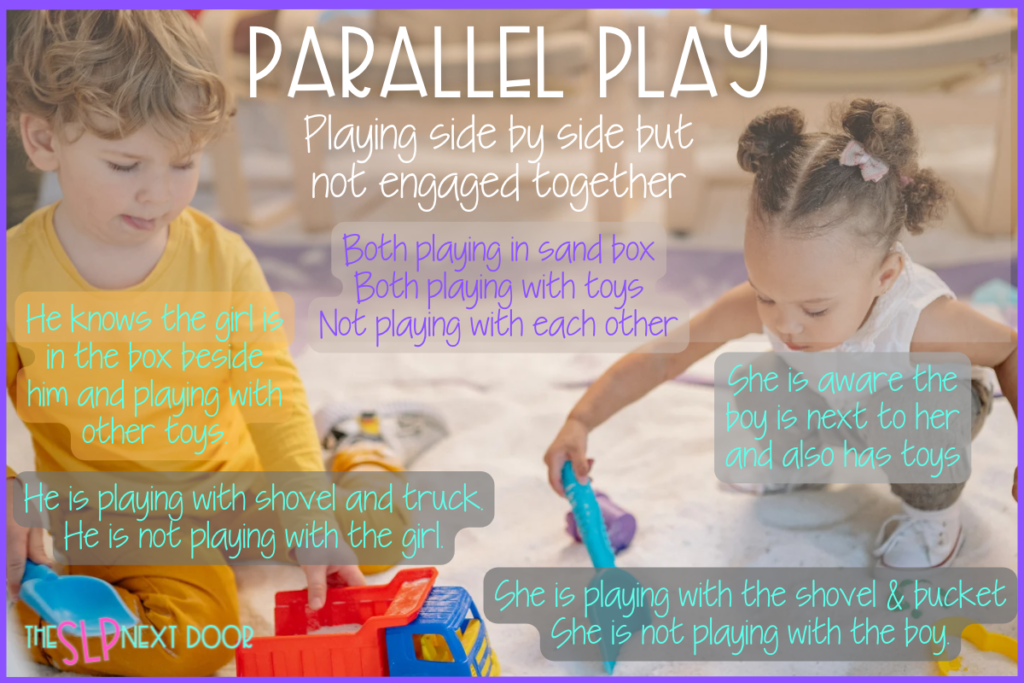
2 Years Old Language Development
Our job as grown-ups, is to help our little ones navigate their development across toddlerhood and encourage appropriate communication skills along the way. What does this look like? Honestly, it just means that we create as many opportunities for language development and communication skills as possible by providing toys, play equipment (sandboxes, playgrounds, etc.), books, and just engage with them as often as possible.
Best Developmental Toys for 2 Year Olds
When it comes to choosing developmental toys for 2 year olds, you’re going to want to look for toys that encourage play and engagement. Interactive flap books, puzzles, blocks, cause and effect toys, and playsets are all great for playing individually but can also be used to encourage interactions with others.
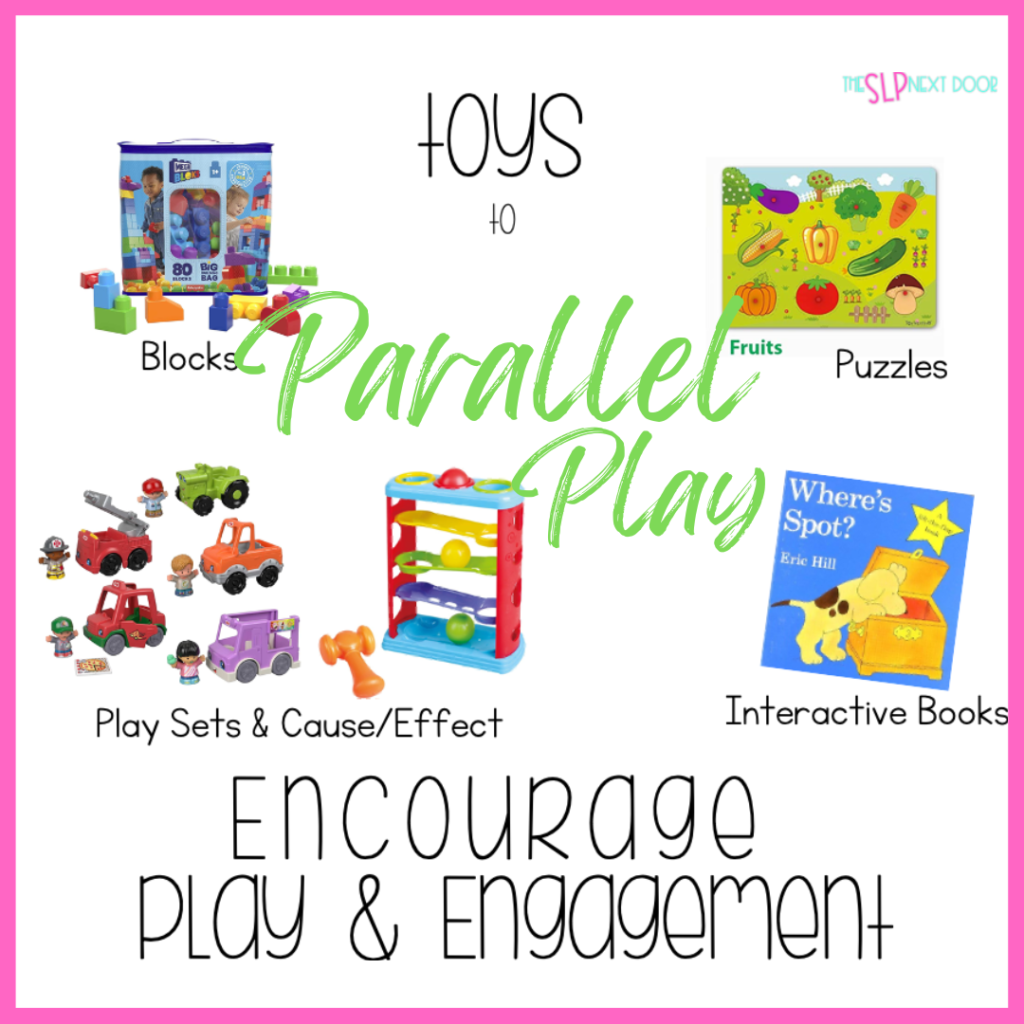
Speech Therapy for 2 Year Olds
When it comes to planning play-based speech therapy activities for toddlers, at 2 years old, toddlers still aren’t really going to be interested in play with you, or anyone else. Keeping the developmental play skills and the early years developmental milestones in mind when treating this population helps to manage your expectations when it comes to therapy sessions. Managing your expectations also helps you see the progress [remember, it’s in the minor details!] What do we do? Follow their lead. Narrate their activities and provide prompting or cues when needed. Most importantly, as always – just play!
All of this can definitely feel like a lot of information! Would a printable for developmental play stages be helpful? You can find one here!

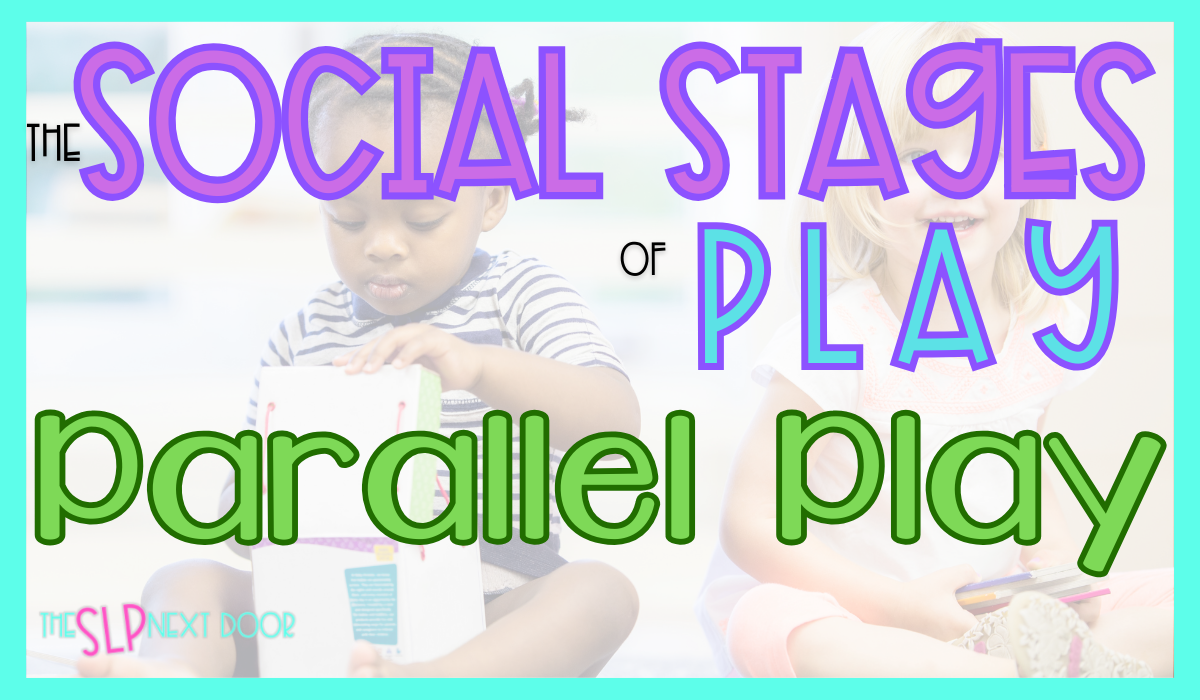
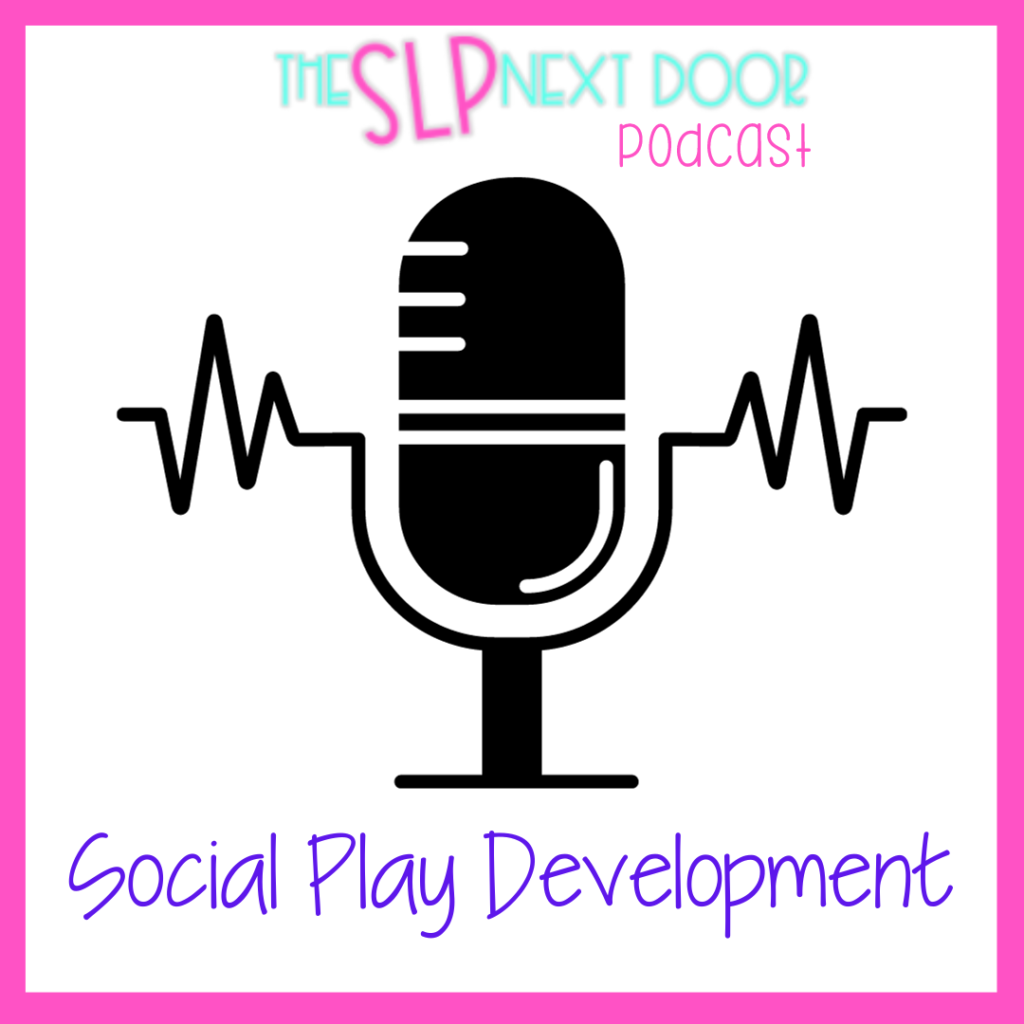
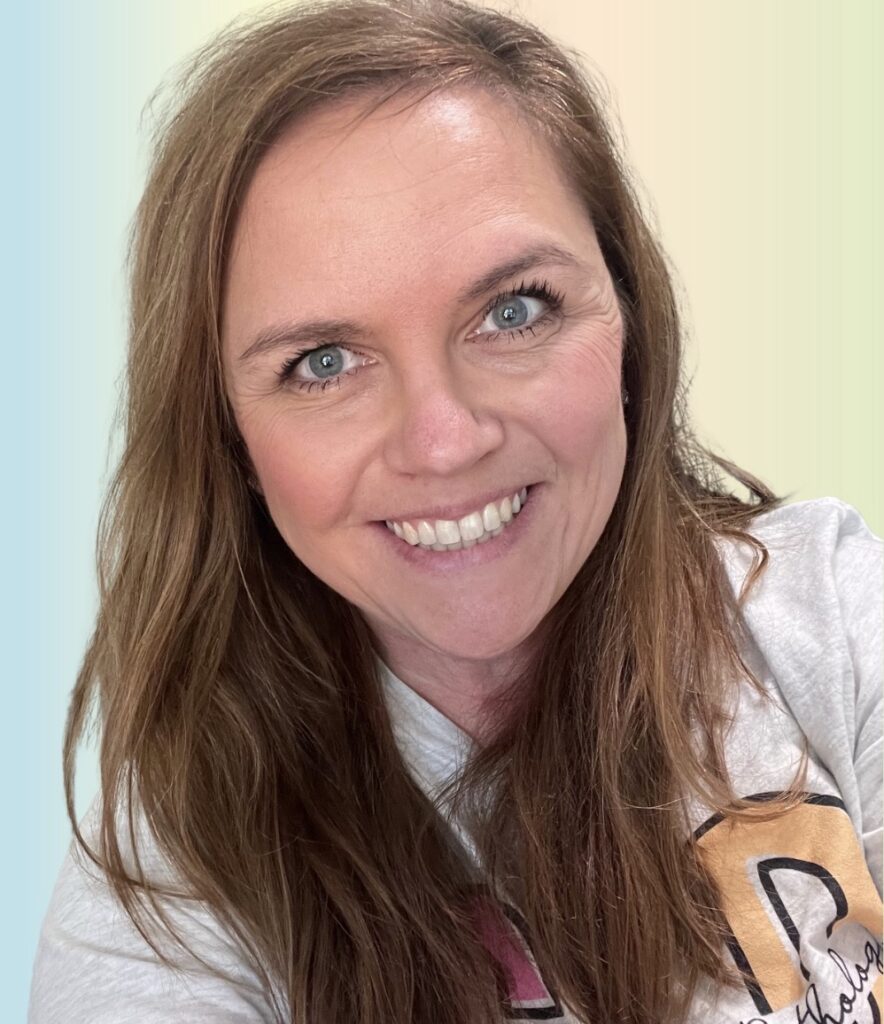
5 Responses
Thanks for sharing!
You’re welcome! 🙂